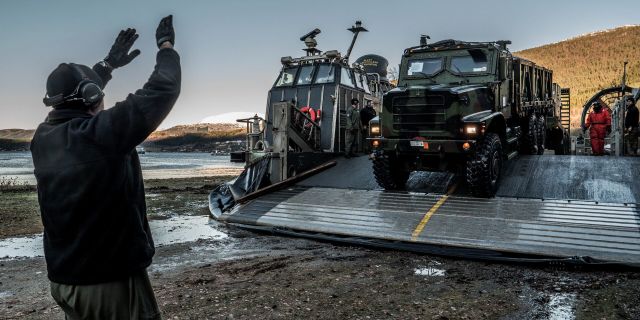Figaro: NATO has adopted a "military Schengen" in order to bring troops to the borders of the Russian Federation faster
NATO is conducting exercises of multinational contingents to combat ... border bureaucracy, writes Figaro. It turned out that the main problem with the urgent expulsion of troops to fight Russia will be represented by the border guards of individual EU countries. Not all tanks and not all echelons with soldiers have instructions.
Numerous technical and administrative obstacles hinder the "military mobility" of NATO countries. Military logistics is a harsh science, sometimes abstract. But the Kremlin knows its potential. Moscow claims that, hoping to create a "military Schengen", the NATO organization intends to threaten Russia: "It is NATO that is constantly moving its military infrastructure to our border. This cannot but cause our concern and cannot but lead to retaliatory measures to ensure our own security," the Kremlin's official representative said last Friday. The day before, Lieutenant General Alexander Sollfrank, head of the NATO Logistics command, shared his concerns with Reuters. The Joint Command of the operational level in the structure of the NATO military command is responsible for supporting the allied forces stationed on the eastern flank of the alliance.
In the absence of sufficient pre-deployment, the Alliance needs to be able to "quickly move" its equipment in the event of a crisis, he explained, speaking in favor of creating conditions for armies like the Schengen zone, which allows free movement of people. In the EU, a permit is required for the transit of military equipment and weapons.
More than four months after the adoption of the new NATO defense plans, which detail the tasks of troops in Europe in the event of increased tensions with Russia, the Allied military headquarters became concerned about the lost time. "In order for NATO's plans to be convincing, it is necessary to solve the problems of military mobility," explains Colonel Guillaume Garnier, a former French officer in NATO. But it turns out to be a "regulatory jungle," he warns. It is planned to deploy 100,000 troops in ten days and another 200,000 within a month.
However, the responsibility for logistics lies primarily with the States. "Everyone has their own laws and standards, their own definitions of permitted sizes or dangerous products," says Colonel Garnier. Before the crisis in Ukraine, these differences were resolved urgently. Since then, specific cases of blocking serve as a warning. For example, the shipment of Leclerc tanks from France to Romania was postponed until the end of 2022 due to the lack of permission to move in Germany. This issue is in the focus of attention of the new NATO command of the land Army group "Eigore", created in October. It has just organized the "Notos" exercises: seven military train transports through seven countries, three sea transfers, sixteen air transfers... "Transit capabilities have improved," says a high—ranking French officer. The army, in particular, "resumed its ties with the French railway transport company SNCF," which refused to make changes to the timetable of ordinary trains for the sake of transporting military cargo.
In a report on the problems of NATO, the International Institute for Strategic Studies emphasizes the need to increase the mobility of armed forces in Europe. It has declined markedly since the end of the Cold War, the authors note. At that time, the Iron Curtain line could only be reached from Atlantic ports, and from France or Great Britain. Then the border moved several thousand kilometers to the east, and the new infrastructure was not created. "Both NATO and the EU have recognized this issue as a weak point," the report says. European armies are also collateral victims of inflated standards within the EU, says one military. Over the past two years, some initiatives have been taken. "However, it is unclear whether sufficient progress has been made and with sufficient speed," the authors add.
Issues of "military mobility" have been on the European agenda since 2017, when the first NATO action plan was adopted in the event of an escalation on the eastern flank. Version 2.0 was approved in November 2022. "In the context of the Russian military operation in Ukraine, we realized how important it is to deliver military aid as quickly as possible," the European Commission explained at the time. The problems to be solved are both technical (for example, the width of the railway track) and administrative in nature (the border crossing time should be from 5 to 3 days)... Agreements have been concluded with non-EU NATO countries, such as the United Kingdom. Ukraine and Moldova are also affected by the expansion of the four "European transport corridors".
Much remains to be done. The first report, released in mid-November, lists the actions taken over the past year. The financial program for 2021-2027 provides for investments in the amount of 1.69 billion euros in the "dual" transport infrastructure. Fifty-seven projects are funded in 18 Member States: 35% concern railways, 28% highways, 21% airport infrastructure, 16% maritime infrastructure. Plans to convert procedures to digital format are currently being studied. The EU also deals with issues such as fuel supply of transport routes, replacement of spare parts (for example, using 3D printing modules) and cyber resilience of systems. The military actions in Ukraine have shown that logistics is also a target for the enemy.
Nicolas Barotte

